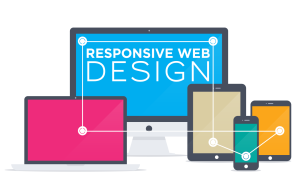- Have any questions?
- (Prasad) +91 96191 46851 | (Parag) +91 99878 20022
- support@pnpwebdesign.com
Decoding Web Development Charges: Understanding Costs and Factors

Unveiling the Excellence: Exploring Web Development Agencies in India
April 2, 2024
Navigating Your Digital Neighborhood: Finding Web Development Companies Near Me
April 2, 2024Decoding Web Development Charges: Understanding Costs and Factors

Navigating the realm of web development can be overwhelming, especially when it comes to understanding the associated charges. Whether you’re a business owner looking to launch a new website or an individual embarking on a personal project, it’s essential to grasp the factors that influence web development charges. In this article, we’ll delve into the intricacies of web development costs and provide insights to help you make informed decisions.
Understanding Web Development Charges:
Web development charges encompass the various costs involved in creating and maintaining a website. These charges can vary significantly depending on factors such as the complexity of the project, the expertise of the development team, and the specific requirements of the client.
Factors Influencing Web Development Charges:
- Project Scope: The scope of the web development project plays a significant role in determining the overall charges. Projects with extensive features and functionalities will naturally incur higher costs compared to simpler websites with basic functionality.
- Design Complexity: The complexity of the website design, including custom graphics, animations, and interactive elements, can impact development charges. Intricate designs require more time and expertise to implement, resulting in higher costs.
- Technical Requirements: Certain technical requirements, such as e-commerce integration, database development, and third-party API integrations, can contribute to higher web development charges. These features require specialized knowledge and additional development effort.
- Content Management System (CMS): The choice of CMS can also affect development charges. Custom-built websites may incur higher costs upfront but offer greater flexibility and scalability in the long run. Conversely, using pre-existing CMS platforms like WordPress or Shopify may reduce initial development costs but can limit customization options.



- Development Timeline: Urgency can impact website development charges, with expedited timelines often leading to higher costs. Rushed projects may require additional resources and overtime hours to meet tight deadlines, resulting in increased charges.
- Maintenance and Support: In addition to initial development costs, ongoing maintenance and support are essential considerations. Factor in the cost of routine updates, security patches, and technical support to ensure the long-term success of your website.
Navigating Pricing Models:
Web development agencies typically offer various pricing models to accommodate different client needs and budgets. Common pricing models include:
- Fixed Price: A predetermined fee for the entire project based on the agreed-upon scope of work.
- Time and Material: Billing based on the actual time and resources expended during the development process.
- Retainer: A monthly or yearly fee for ongoing maintenance and support services.
Conclusion: Web development charges
Website development charges can vary widely depending on numerous factors, including project scope, design complexity, technical requirements, and development timeline. By understanding these factors and exploring different pricing models, you can make informed decisions and ensure that your web development project aligns with your budget and objectives.





